To honor Guru Padmasambhava who brought Buddhism into the country, annually thousands of people from Paro and other parts of the country fill till the brim of the courtyard outside the Rinpung Dzong. Several indigenous well-choreographed mask dances, traditional dances, and songs make the festival colorful and picturesque. The main highlight of the festival is unfurling of the giant silk Thangka or thongdrel of Guru Rinpoche. The thongdrel is just exhibited for few hours at early daybreak for people and devotees to get a blessing from.
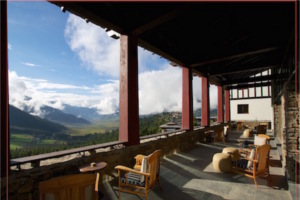
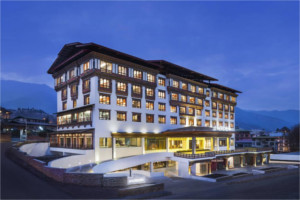
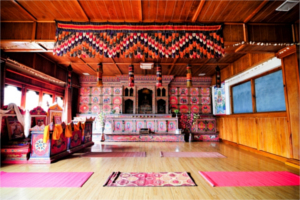
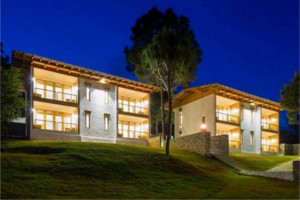
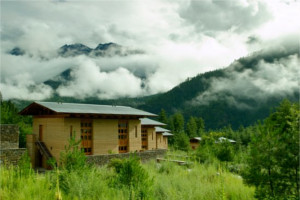
Fly into Paro valley.
The fight into Bhutan over the Himalayas is one of the most spectacular experiences. Particularly the flights from Delhi (India) and Katmandu (Nepal) fly past the majestic Mt.Everest, Kanchenjunga and the entire Himalayan range, visible on the left side of the plane as it glides towards Bhutan. On landing at Paro you will be received by our representative. After customs and Immigration formalities, you will be escorted the Hotel.
Paro Tshechu is one of the most famous festivals in Bhutan, a mass of people travel from around the valley and neighboring districts to participate in the festival. On the last day of the celebration, a gigantic Thangkha (Thongdrel) of Guru Rinpoche is usually displayed inside the Dzong. The Thongdrel is displayed early in the morning and for just a few hours only. It is believed that one can be cleansed of their sins upon mere sight of the Thongdrel.
After Lunch again go to witness the festival and later evening drive to Thimphu.
Overnight at Thimphu.
Breakfast
Visit the National Memorial Chorten (Stupa), built in memory of the 3rd King of Bhutan. Visit the Art School and Changangkha Lhakhang (a temple built in 12th century by a Tibetan saint).
Lunch
Visit the National Takin Reserve Center to see Takin, the national animal of Bhutan and Trashichhodzong (fortress of glorious religion). Trashichhodzong in its current form was completed in 1968 and it houses the throne room of His Majesty the King of Bhutan. It is also a center of monastic body and houses main secretariat building. The majestic Dzong located along the Wangchu (Thimphu River) has a Tendrel Thang which is the venue for Thimphu Dromchoe and Thimphu Tsechu, the annual Thimphu Festival where thousands of people fill the courtyard to witness the mask dances, traditional dances, and many more.
Visit Semtokha Dzong, five miles from main Thimphu town, the Dzong is considered to be the first ever built by Zhabdrung Ngawang Namgyel in 1629, therefore the oldest fortress in Bhutan. Located on a ridge overlooking the entire valley, the Dzong houses a chapel for protective deities Yeshe Goenpo (Mahakala) and Palden Lhamo of Bhutan.
Visit Buddha Dordenma, the largest standing Buddha Statue in the world. Buddha Dordenma is 54 meters (177 ft) tall, one of the largest Buddha Shakyamuni statue in the world, fulfilling a prophecy that mentioned a large statue of either Guru Padmasambhava, Buddha or of a (Vajrakilaya) Phurba would be built in the region to bestow blessings, peace, and happiness on the world, the statue erection was started in 2006 and completed in 2015. The statue is mentioned in the ancient Terma of Guru Padmasambhava himself dated from approximately the sixth century, the prophesized Terma was recovered some 672 years ago by Terton Dorje Lingpa (1346) and 104 years and after 568 years ago by Terton Pema Lingpa.
Also visit Folk Heritage museum, Royal Textile Museum and craft markets.
Overnight at Thimphu.
Stop at Dochula pass 3100m on route to Punakha from Thimphu. Dochula pass is one of the famous landmarks in Bhutan from which one can sight the Himalayan Range of Bhutan on clear winter days. The place is adorned with Druk Wangyel Chorten, 108 stupas built to honor the 4th king of Bhutan and bring peace to the region. The stupas were built under the patronage of Ashi Dorji Wangmo Wangchuck.
Descend to Punakha Valley (1280m).
Punakha valley served as the capital of Bhutan till 1955 until it was shifted to Thimphu. The Punakha Dzong is still the winter seat of Je Khenpo (Chief Abbot) of the monastic body as the place has a temperate climate with Phochu and Mochu Rivers flowing through the fertile fields of the valley.
Visit Punakha Dzong.
Punakha Dzong or Pungthang Dewa Chenpai Phodrang, the palace of bliss was built in 1937 by Zhabdrung Ngawang Namgyel. The second oldest Dzong is religiously and architecturally significant to Bhutanese as it houses several sacred relics, scriptures, statues and is the place where the first king of Bhutan was crowned in 1907. Punakha Dzong is also famous for Punakha Drupchen where the 17th-century battle scene with Tibetan invaders are recreated and is followed by Punakha Tsechu where grand Thongdrel of Guru Rinpoche is unfurled with costumed mask dances and rituals.
Visit Khamsum Yulley Namgyel Chorten.
The eminent Monastery which is also referred as Punakha Zangdopelri was built with the sponsorship of her Majesty the Queen Mother Ashi Tshering Yangdon Wangchuck under the guidance of Dilgo Khyentse Rinpoche and Lam Sonam Zangpo to bring peace in the world. The short hike up to the Lhakhang along the paddy fields is one of the most scenic short hikes one can take and the view from the top of the Lhakhang is often described as picturesque, breathtaking and enriching by the visitors.
Photography: Anytime.
Overnight at Punakha.
Drive back to Paro from Punakha.
Visit Chimmi Lhakhang on the way, the temple of Lama Drukpa Kuenley (The Devine Mad Man). Chimmi Lhakhang was built in 1499 by Lam Ngawang Chogyel on the spot where Lama Drukpa Kuenley subdued a demon who was fleeing away in form of a dog and buried the demon naming the spot as khe mae (no dog now). Hence the temple was named Temple of no dog (Chimmi Lhakhang).
Overnight at Paro.
Early breakfast
Hike for about 4 hours to Paro Taktsang, the famous Tigers Nest monastery which is perched on a cliff at about 900m above the Paro valley.
In the afternoon visit Kyichu Lhakhang, the oldest temple in Paro. Originally built in 7th century by Tibetan Emperor, it’s one of the 108 temples he built in the region. The temple is believed to have spiritual treasures concealed by Guru Padmasambhava and the two orange trees in the courtyard defy the natural way of orange trees usually growing in lower altitude and it’s believed to bear fruit throughout the year.
daily tariff:USD 250 Per person per night
surcharges:
Solo Traveller: USD 40 per night
Dual Traveller: USD 30 per person per night
Three travellers and above: surcharges not applicable
Visa fees: One time payment of USD 40 per person.
daily tariff:USD 200 Per person per night
surcharges:
Solo Traveller: USD 40 per night
Dual Traveller: USD 30 per person per night
Three travellers and above: surcharges not applicable
Visa fees: One time payment of USD 40 per person.
A minimum of 3 star accommodation (4 & 5 star may require an additional premium).
All meals
A licensed Bhutanese tour guide for the extent of your stay
All internal transport (excluding internal flights)
Camping equipment and haulage for trekking tours